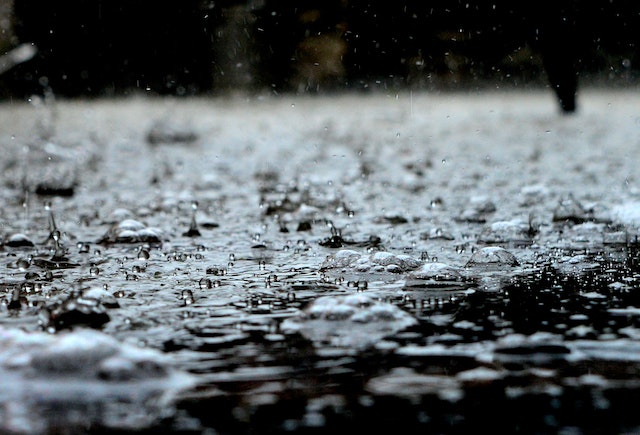
What makes rain smell? A combination of plant oils, bacterial spores, and ozone.
Everything always smells very fresh after a rainfall and there is a word for it. Merriam-Webster defines petrichor as, “a distinctive, earthy, usually pleasant odor that is associated with rainfall especially when following a warm, dry period”. The word was invented by an Australian mineralogist and biochemist called Richard Thomas. The smell had been known about for a long time and it was called “argillaceous odor”, which means the smell or rocks or sediment. Thomas combined the Greek words “petra” meaning stone and “ichor” meaning essence.
So, what creates that lovely smell? A combination of three things: oils that the plants produce, chemicals that bacteria produce, and the composition of the raindrops.
The first part of the smell is the oil that plants produce. Petrichor is most noticeable after a dry period and this is because, when it is dry, plants secrete oils that accumulate in the soil and rocks around the plants. The purpose of these oils is to stop root growth and seed germination. When there is a lack of water, plants don’t need competition from germinating seeds, and they need to conserve what water they have so they cannot use any for growing roots. They release oils to signal these mechanisms to halt. The oils build up around the plants.
The second part of the smell comes from a chemical released by bacteria. There is a type of bacteria called actinobacteria that live in the soil and break down dead organic matter. They can break down cellulose, sugars, fats, proteins, organic acids, and many other substances. They are a vital part of the ecosystem because they break organic matter down into simple chemical compounds, which plants then reabsorb and use to grow. When actinobacteria break down organic matter, they produce spores and a chemical called geosmin as a byproduct of that. Geosmin is a type of alcohol and it has a very strong scent. We are able to smell geosmin at concentrations of 0.4 parts per billion. That means, we can smell geosmin if there are 4 molecules of it within 10 billion air molecules. Geosmin has a very recognizable smell. If you are digging your garden, or plowing a field, the smell you get when you turn the earth over is geosmin.
When it has been dry for a while, the actinobacteria aren’t as active, but they produce more spores and more geosmin with it. Then, just before it rains, the air becomes more humid and they start to become active again, but they have loaded the soil with spores and geosmin.
The third part of the equation is the way raindrops act when they hit the ground. Most raindrops contain between 0.001 and 0.3 ml of water. When the raindrop hits the ground, it is travelling at about 7 km/h and the wind resistance gives it its characteristic shape. It hits the ground and instantly flattens, but if it hits a surface that is porous, tiny amounts of air are trapped underneath the raindrop. These air bubbles rapidly make their way through the raindrop and burst out of the top of the raindrop as an aerosol. They get carried away on the wind.
When the rain hits dry soil, it doesn’t just trap air, it also traps the oils from the plants and the geosmin from the bacteria. These compounds pass through the raindrop and are scattered as an aerosol into the wind. And this is what we can smell when it rains.
Another interesting question is why our noses are so sensitive to geosmin. The theory is that it was a useful advantage for early humans because it helped them to search for water in arid areas. Most of us also find the smell of the first rain after a dry period pleasant, which is another evolutionary tool. We are attracted to rain, which gives us more chance to hunt or to plant.
So, the pleasant smell after the first rain on dry soil is called petrichor and it is caused by the oils from plants and the geosmin produced by bacteria being lifted off the ground by raindrops and flung into the air. And this is what I learned today.
https://www.theguardian.com/news/2021/sep/11/heaven-scent-science-satisfying-smell-rain-petrichor
https://en.wikipedia.org/wiki/Petrichor
https://www.merriam-webster.com/dictionary/petrichor
https://www.smithsonianmag.com/science-nature/what-makes-rain-smell-so-good-13806085/
https://www.baranidesign.com/faq-articles/2020/1/19/rain-drop-size-and-speed-of-a-falling-rain-drop
https://www.intechopen.com/chapters/49873
